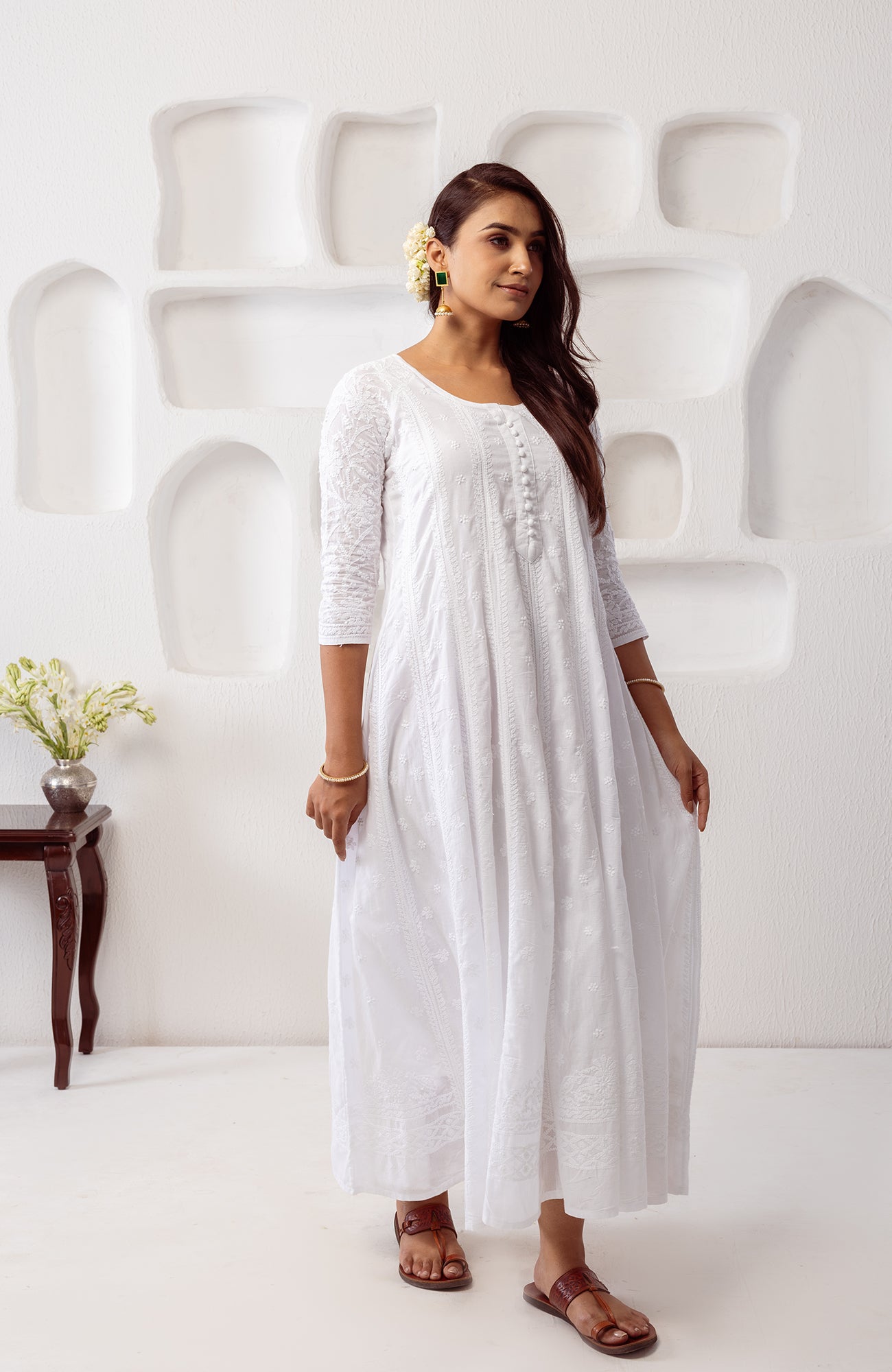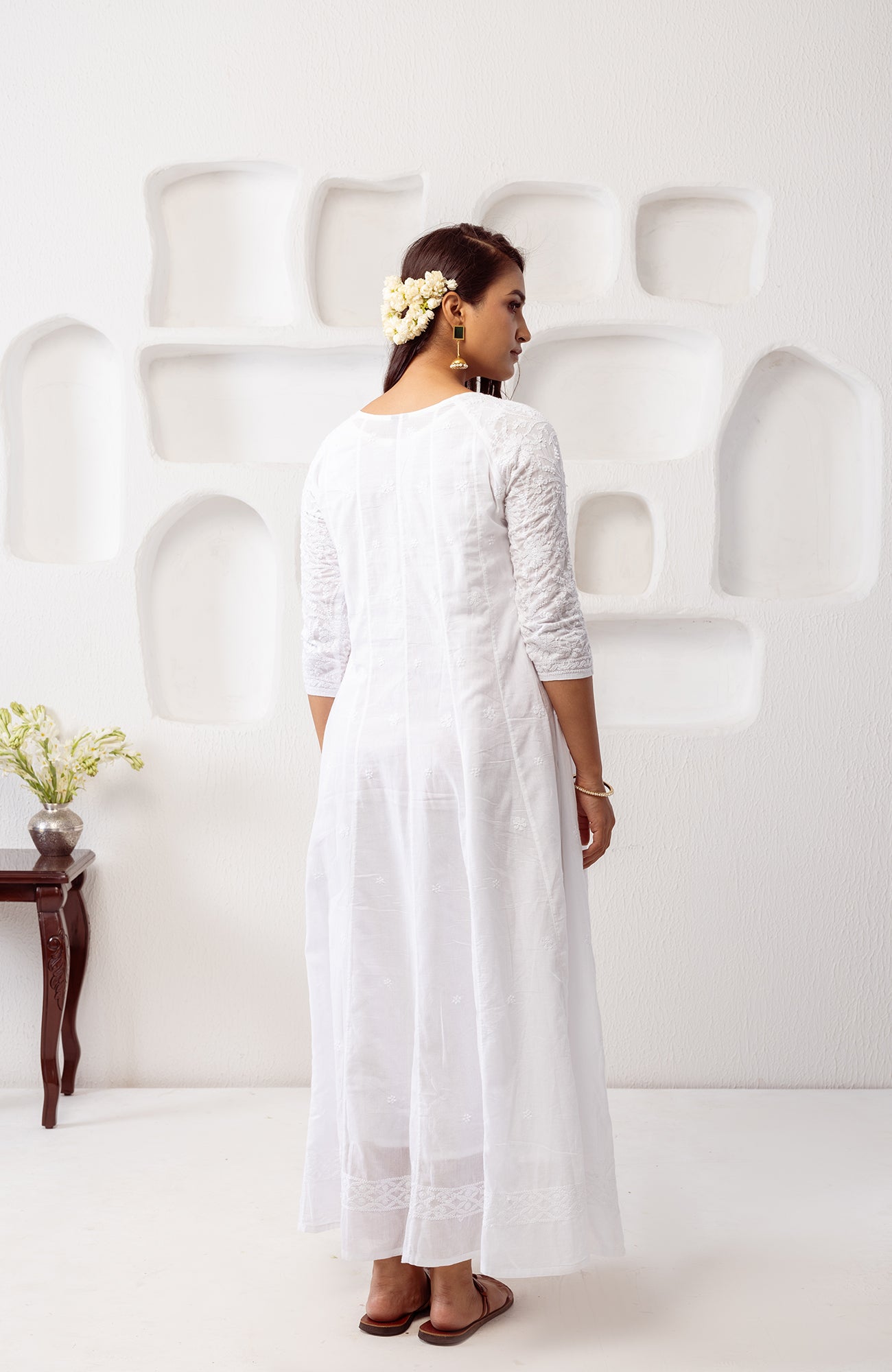
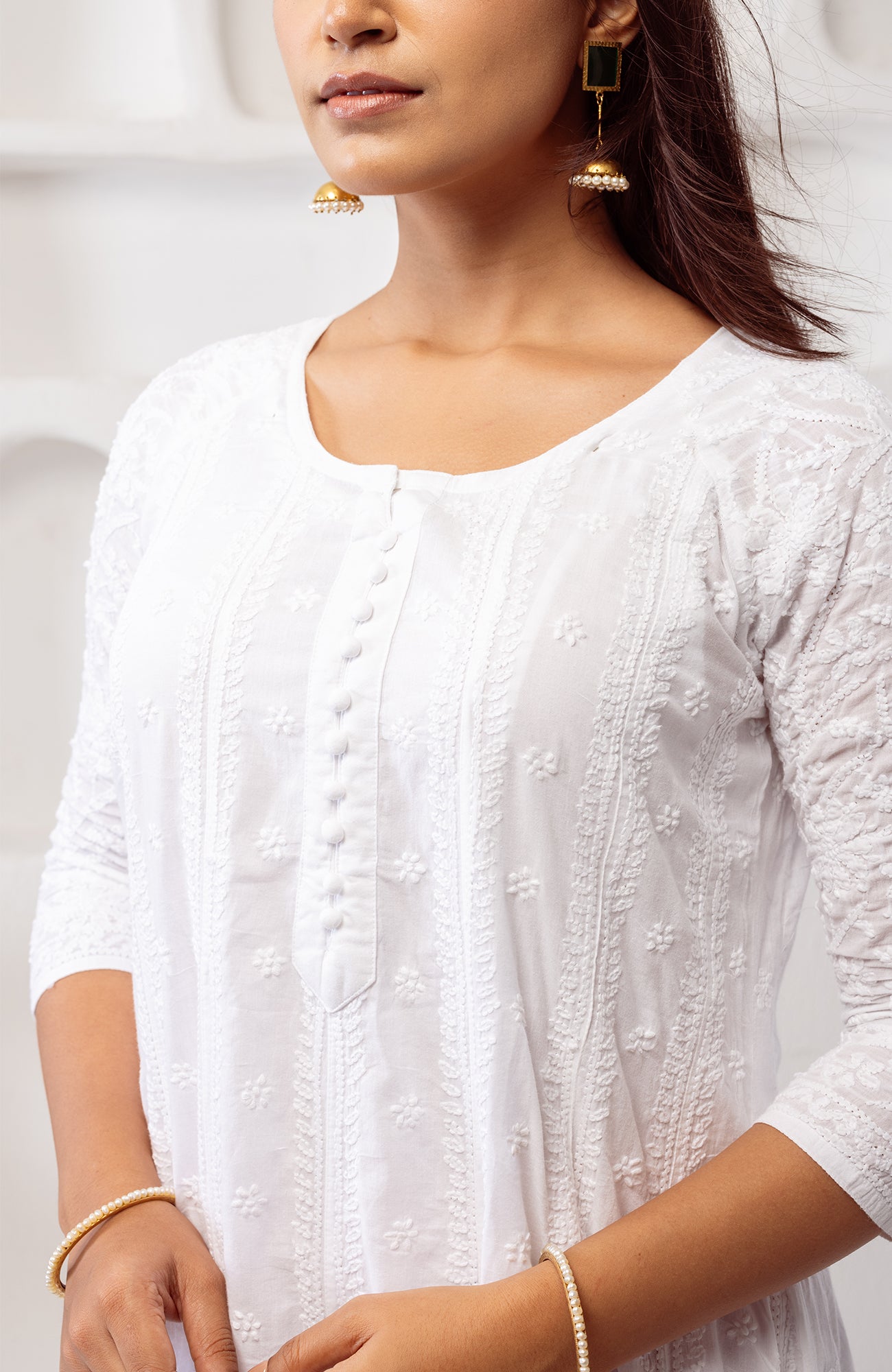
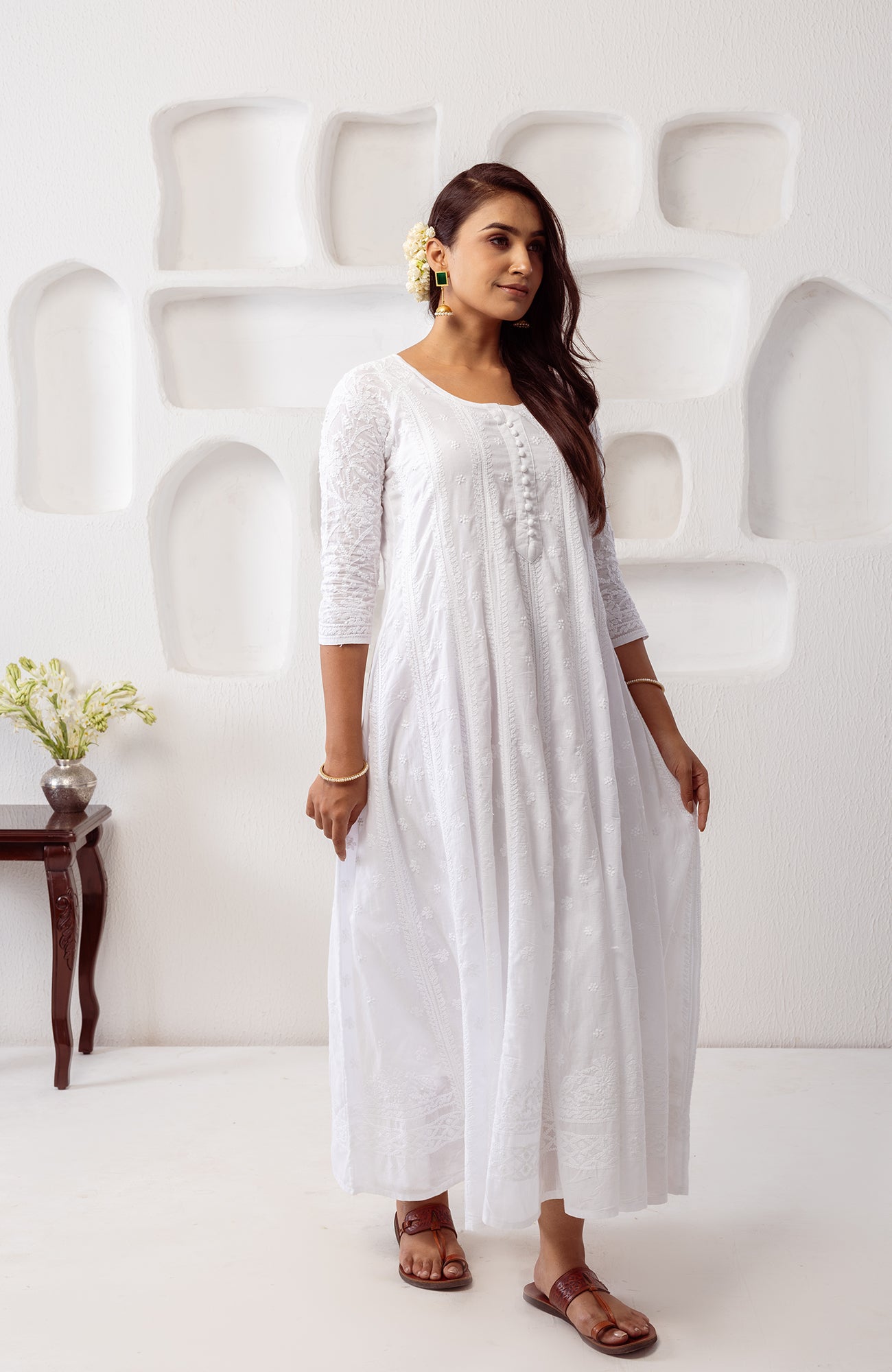
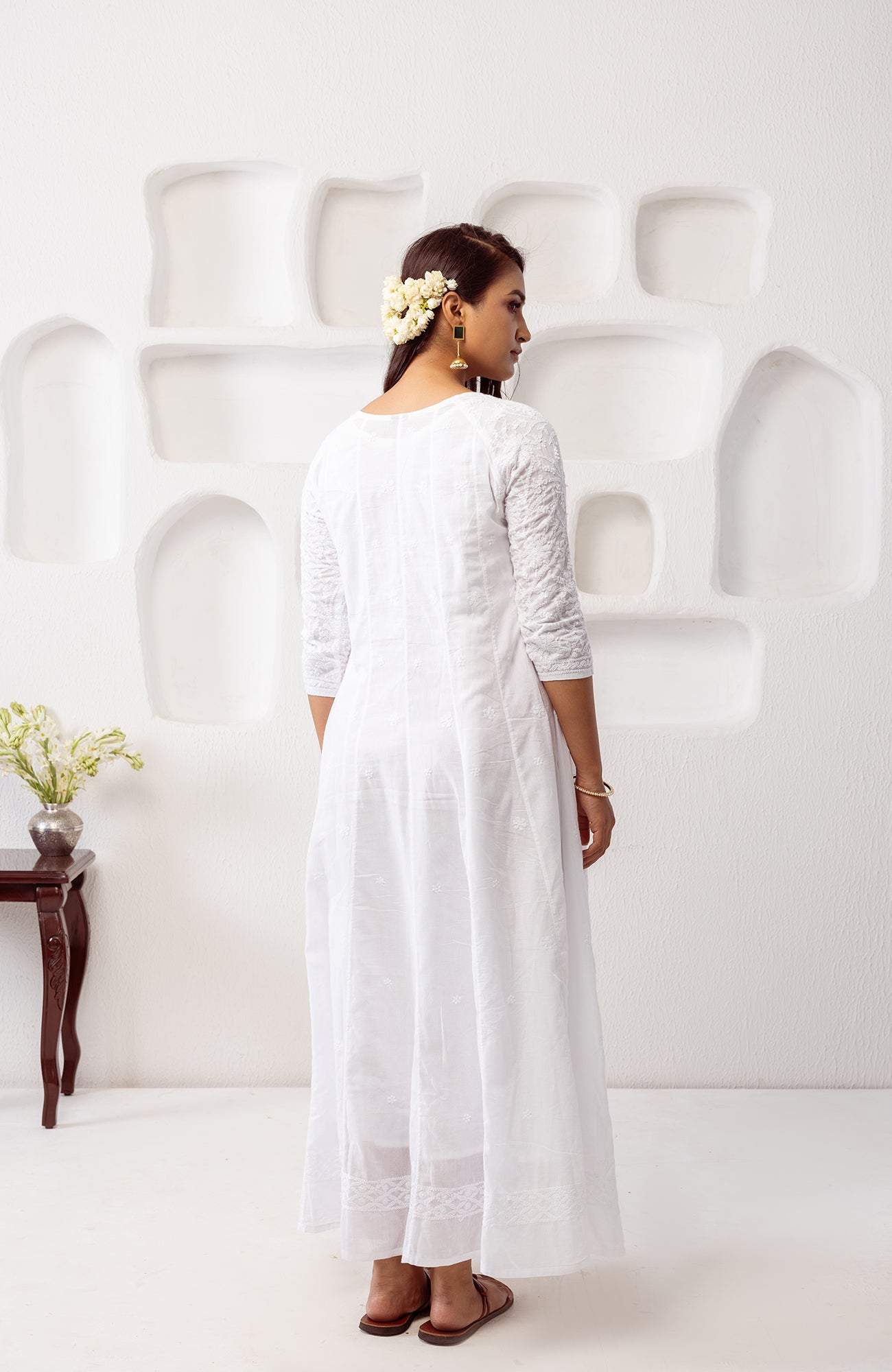
Classic White-on-White Chikankari
Originally, chikankari was predominantly done on white fabrics such as muslin or cotton. This preference for white can be attributed to several cultural and practical reasons. Firstly, white was considered a symbol of purity and elegance in Mughal aesthetics, reflecting the imperial preference for simplicity and refinement. Secondly, the hot climate of North India made lightweight, breathable white fabrics ideal for everyday wear.
The embroidery itself evolved from Persian floral motifs to incorporate local influences, resulting in a fusion of artistic styles. Over time, Chikankari became not only a mark of Mughal aristocracy but also a beloved craft across various regions of India, including Lucknow, Hyderabad, and Kolkata. Today, while Chikankari is also done on colored fabrics and in various hues, the tradition of white-on-white embroidery remains iconic, preserving its historical significance and timeless appeal in the world of fashion and craftsmanship.



